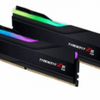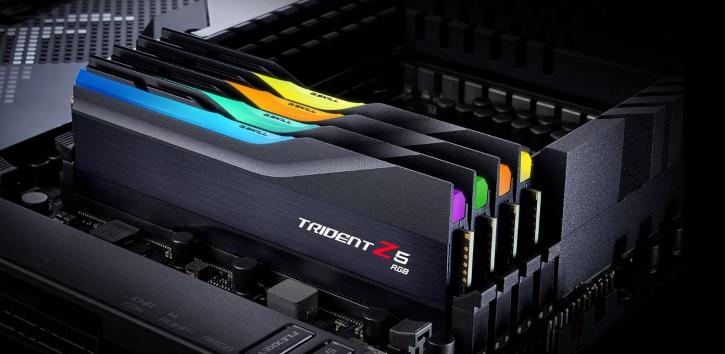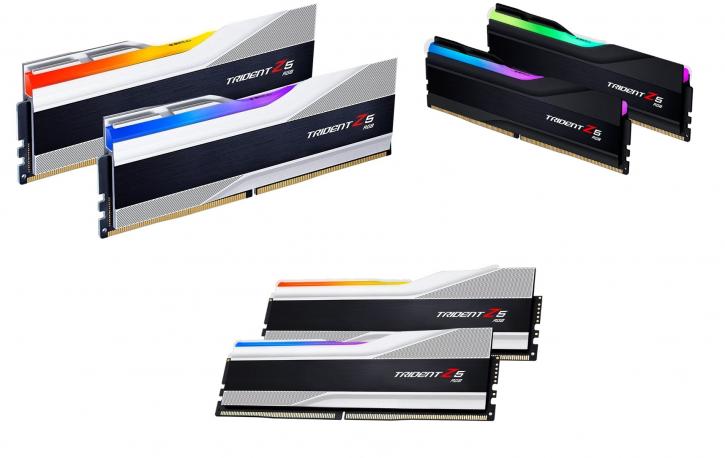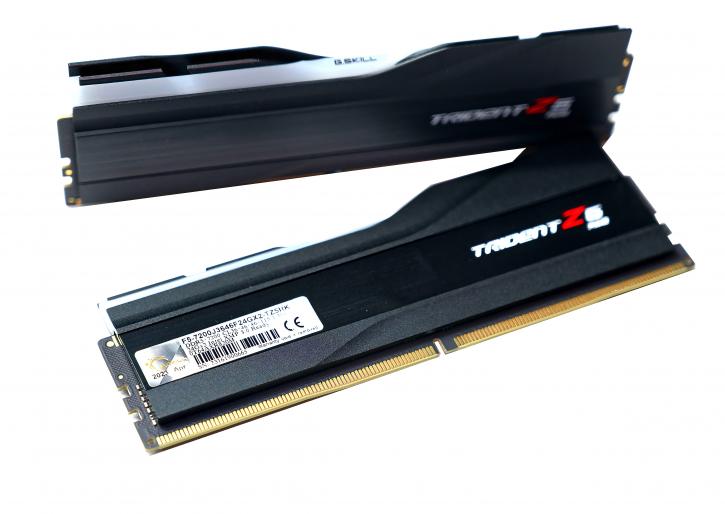Introduction
G.Skill TridentZ RGB 7200 CL36 DDR5 48 GB (2x 24 GB)
7200 MHz CL36 48 GB (2x 24 GB)
G.Skill is a company (from Taipei) whose products don’t need an introduction. The main “dish” is the RAM, from the DDR5 type. The provided sample is from a Trident Z5 series. We already covered the 5600 MHz CL36 (RGB-less) variant back in March’2022 (and it earned the “Recommended” award), and 7200 MHz CL34 (with the RGB lighting) also in March, but 2023 (this time it was the “Top Pick”). This time around, the sample is from the high-capacity kits (2x24 GB/2x48 GB) that were announced, yes – also in March (‘23), reaching up to 8200 MHz for the 2x 24 GB edition, and up to 6800 MHz when two 48 GB modules are used. This top-tier series in the G.Skill offers frequencies up to 8200 MHz. This series got the following prizes:
- European Hardware Awards 2022/2023 for best system memory series
- BC – Best Choice award
- reddot winner 2022
A quick reminder - DDR5 is the newest technology to hit the market, make headlines, and break world records. DDR5 already set spectacular results in overclocking (of course, using the LN2), as even 10550 MHz. DDR4 RAMs operate on a single 64-bit bus, while DDR5 has two 32-bit buses (plus, in both cases, an additional 8-bit for ECC). As a result, a single module is identified as a Dual Channel, while two are identified as Quad Channel. However, the solution does not match the throughput of HEDT platforms with processors with a four-channel controller. The internal (A / B) channels of DDR5 RAM also share the RCD (Register Clock Driver), which provides more output signals and more extended pulse reading (8 vs. 16). The DDR5 comes with a Power Management Integrated Circuit (PMIC) from the most important things you need to know. It’s responsible for controlling voltage changes, optimizing the energy draw, and making it less demanding for the motherboard controller. The DDR4 nominal voltage is 1.2 V; for the DDR5, it’s 1.1 V. Typical XMP voltage for the older type of memory is 1.35V (sometimes 1.45 V); now, it’s mostly 1.25 V. Speaking of the XMP, till now, it was 2.0 revision, with the introduction of the DDR5 we’ve got the rev 3.0. The main difference is that the number of profiles has increased from three to five (three for the manufacturer settings and two placeholders for the users).
After this short introduction – let’s present a bit of the review sample. There are three color variants:
- Black (which we got)
- Silver
- White (newly introduced)
The Trident Z5 RGB DDR5 memory kit we are examining operates at a 7200 MHz clock with CL36-46-46-115 timings at 1.35 V. While this is not the maximum frequency in the series, it is toward the upper range. The series spans from 5200 to 8200 MHz, though compatibility at the highest frequency is selective with motherboards. A variant of the Trident Z5 without RGB lighting is available, albeit with a limited frequency range. The RGB features on this module are compatible with the following control platforms:
- Asus Aura Sync
- Asrock Polychrome RGB
- Gigabyte RGB Fusion 2.0
- MSI Mystic Light Sync
It’s a series with an XMP profile. For the AMD AM5 platform, the following ones are available:
The height of the memory module is 43 mm, so it’s a relatively low-profile form, which should cause rare problems with the (air) CPU coolers.
We’ll check the kit on two platforms, with Z790-based motherboards (Asus Z790 Maximus Hero) combined with the Intel Core i9 13900K and the Asrock X670E Steel Legend combined with an AMD Ryzen 9 7900X. The used GPU is the Nvidia Geforce RTX 4090, so it shouldn’t be a limiting factor for memory performance. We are traditionally going to try and squeeze something more out of it. You can always stay safe and stick to the advertised frequency and latencies using XMP 3.0. The default parameters and visual aspects look attractive – we must check the performance then. A limited lifetime warranty backs the G.Skill TridentZ RGB series. Ok, next page, please.




